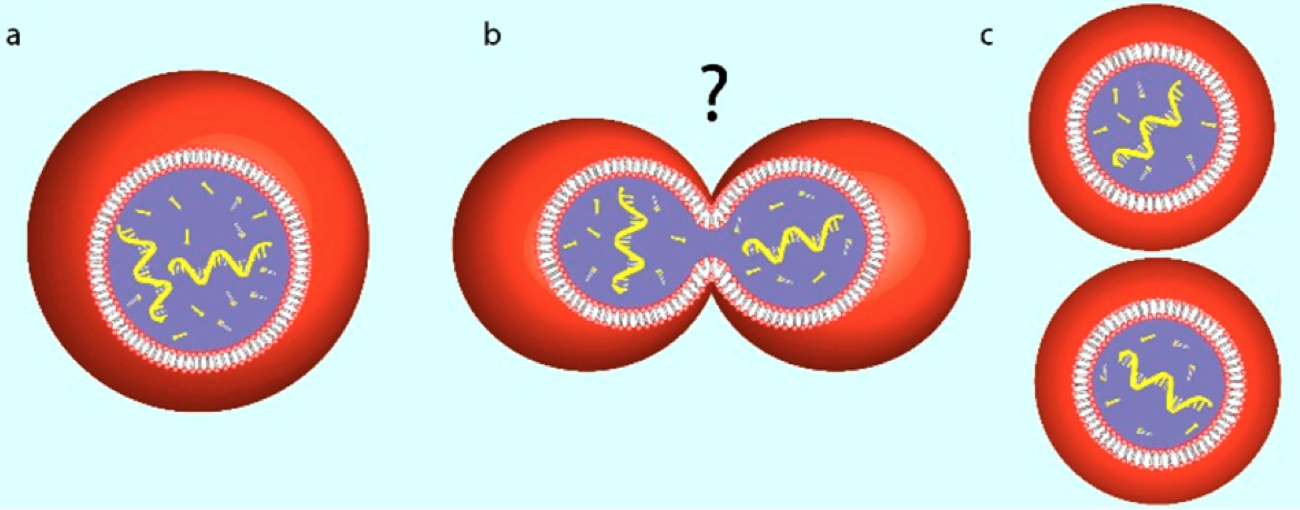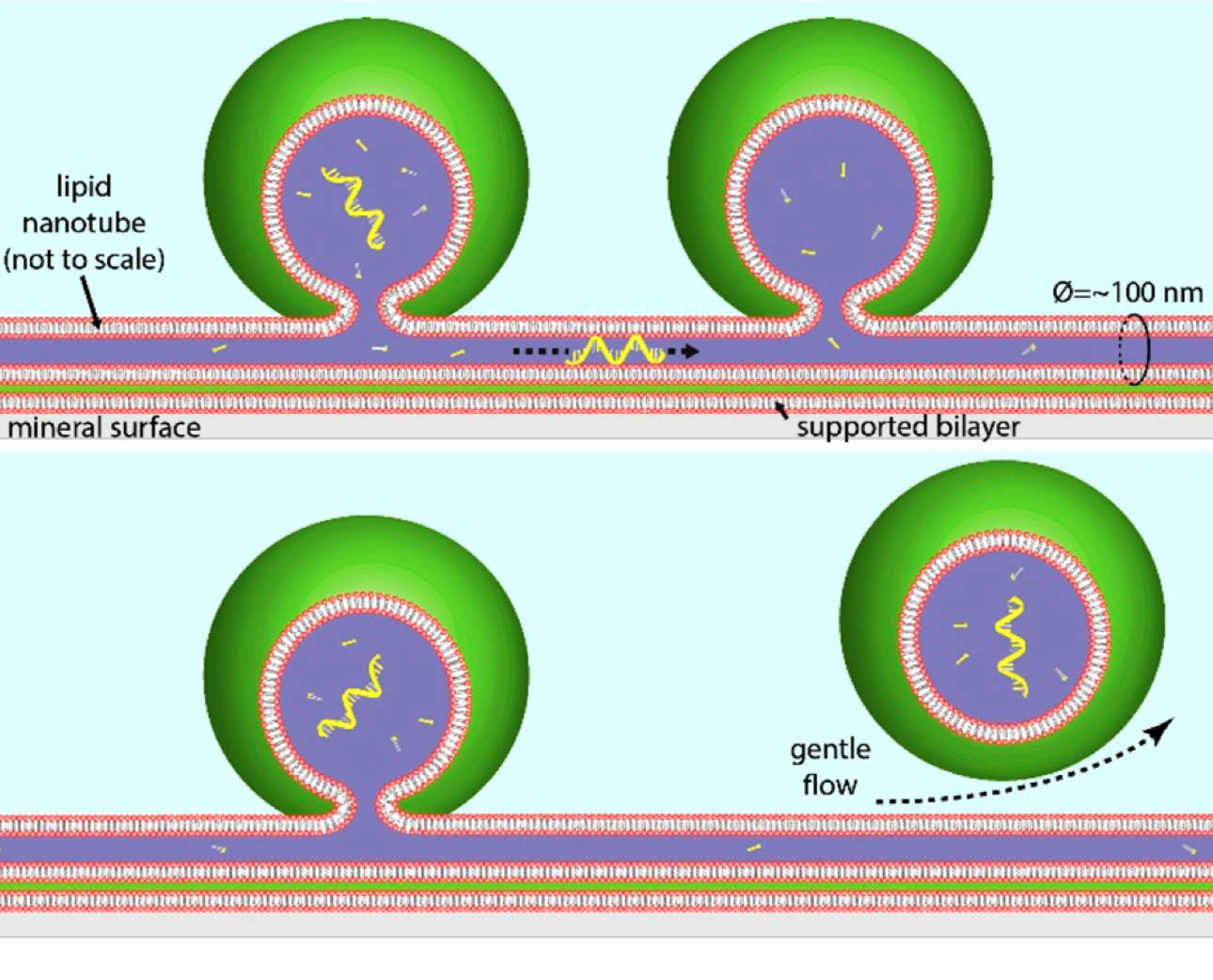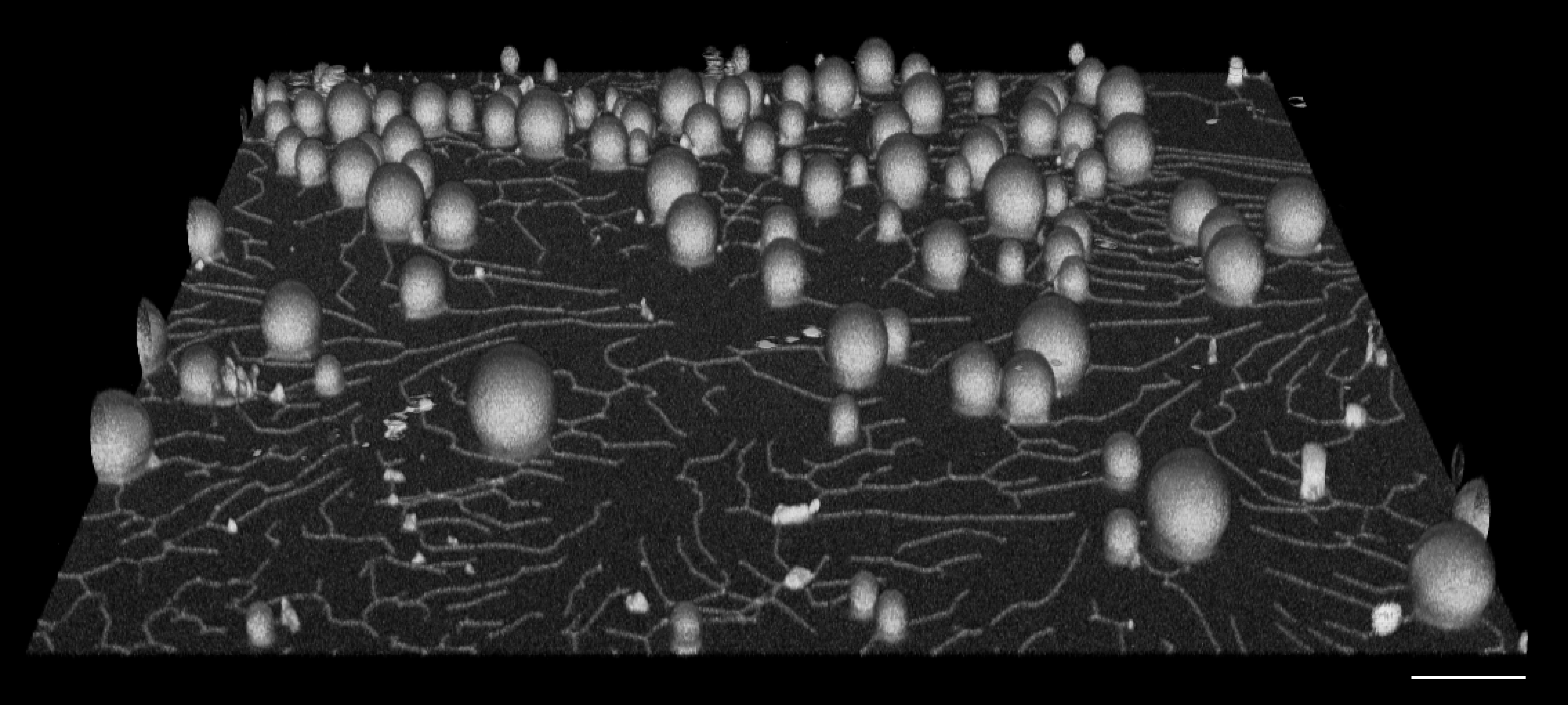New article from Irep Gözen: how did the first cell division event take place?
NCMM group leader Irep Gözen recently published a perspectives article in ACS Nano, where she presents a new hypothesis for how cells were first able to divide on the early earth.




The cells that make up all living material on the earth today possess sophisticated internal machineries that enable cell division. This fundamental ability – turning one ‘parent’ cell and its genetic components into two identical ‘daughter’ cells – is a mainstay of life on earth. If cells had not learned how to divide billions of years ago, we (and all other living matter) would not be around today.
But how did cells first develop this skill? A consistent, simple and robust mechanism that can address this question has long challenged scientists.
Protocells: the division mystery
Dr Irep Gözen and her research group at NCMM have been working towards solving the cell division question. Their research involves studying the formation and behavior of vesicular structures related to ‘protocells’. These are simple, spherical, membrane-enclosed microvesicles thought to represent the very first cells that existed on the early earth, and the precursors to modern cells that exist today.
Protocells do not possess the intricate machineries that enable modern cells to undergo the energy-consuming process of cell division. How these cells were first able to divide and, thereby, give rise to the first truly living material capable of self-replication, remains a mystery.
Indeed, it is widely believed among scientists that the spontaneous division of a simple protocell in aqueous solution, without the involvement of force or energy, is not a realistic concept (Fig 1).
However, new work from the Gözen group now challenges that theory.
Formation and division in unison
In a recent publication, the Gözen group provided intriguing new insights into how protocells were first formed (2). Dr Gözen believes these discoveries could help to explain how protocells were first able to divide, as the first division event may have occurred immediately following protocell generation.
In their paper, the Gözen group reported the spontaneous and straightforward formation of membrane-enclosed vesicles, much like protocells, from networks of interconnected nanotubes (Fig 2). This process required the simple addition of lipids to a solid silicon oxide (SiO2) surface in an aqueous environment, and eventually led to the detachment of fully formed protocells from the nanotube networks under gentle flow. Furthermore, detached protocells were able to migrate to remote locations, in principle enabling interconnection with protocells distal to the site of origin. You can read more about the process of surface-assisted protocell formation in this blog article on the UiO Faculty of Medicine website.
Dr Gözen believes this process provides a model by which spontaneous protocell formation and division effectively occurred in unison, where the nanotubes connecting two newly-formed protocells provide the ‘bridge’ that connects two dividing cells. In this model, the passing of genetic material and other substances between dividing protocells occurs via the inter-connecting nanotubes (Fig 2). Indeed, it is well established that the nanotubes possess diameters between 50 and 150 nm, allowing sufficient space for the protected transfer of genetic polymers.
Which came first, division or genetic material?
Interestingly, Dr Gözen’s model opens up the possibility that protocell division occurred before genetic polymers were available to protocells, as nanotube-based protocell formation/division can occur in the absence of genetic material. This is in contrast to the widely-held view that the presence and growth of genetic polymers within protocells must somehow have contributed to the mechanical forces necessary to mediate cell division.
So how could genetic material eventually be incorporated into the nanotube-based division model?
Dr Gözen’s group found that growing nanotube-linked protocells were capable of taking up and encapsulating chemical compounds via small pores in their cell membrane. Compounds that could cross the cell membranes included those similar in size to nucleotides (the building blocks for genetic material). This indicates that nanotube-linked protocells were capable of absorbing surrounding genetic material that existed on the early earth. Subsequently, replication and redistribution of the genetic material could occur through nanotube-based protocell division.
Questions remain unanswered
Discussing the division hypothesis, Dr Gözen said “This is a vibrant and growing research field, and we are very excited by our findings and the implications for the first cell division event. We now want to work towards addressing the multitude of questions that remain unanswered on this topic, including how stable the nanotube networks are under different conditions and whether the protocells are able to undergo unlimited formation-detachment cycles”.
Another intriguing aspect to the Gözen group’s findings relates to the nature of the solid surface used in their experiments. Dr Gözen continues “In addition to its known presence on the early earth, silicon oxide has recently been detected in abundance on Mars in the form of tridymite. It’s tempting to speculate that protocell formation and division might not be limited to planet Earth!”.
References
(1) A Hypothesis for Protocell Division on the Early Earth. Gözen, I. ACS Nano (2019). The full perspectives article from Dr Gozen.
(2) Nanotube-Mediated Path to Protocell Formation. Köksal, E. et al. ACS Nano (2019). The original research article reporting the nanotube-based formation of protocells.